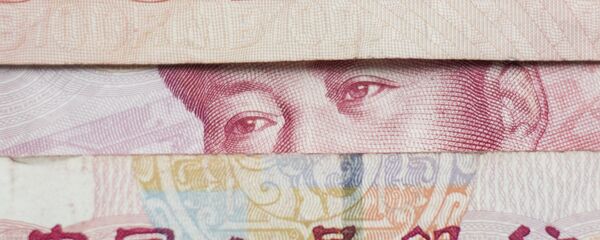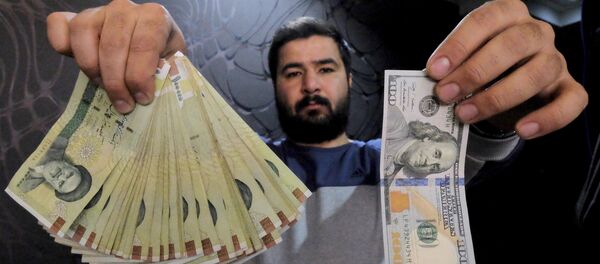The Chinese dollar debt problem remains manageable as Beijing continues to maintain control over capital transfers, Bai Ming, a research fellow at the Chinese Academy of International Trade and Economic Cooperation under the Ministry of Commerce, told Sputnik China.
On November 16, the South China Morning Post reported that China's growing external US dollar debt poses a significant challenge to Beijing, citing Kevin Lai, chief economist at investment bank Daiwa Capital Markets.
According to Lai, global dollar debt currently amounts to $12 trillion, with $3 trillion being borrowed by China and its subsidiaries in Hong Kong, Singapore and the Caribbean.
"Traders, investors and their clients have in the past taken advantage of the lucrative spread between US and Chinese interest rates to borrow cheap dollar debt and convert it into higher yielding yuan-denominated assets," the media outlet elaborated.
"We are talking about a huge dollar whammy. If the yuan continues to depreciate then you will see a dollar debt crisis," Lai warned.
He added that the ongoing trade war between the US and China could push the world's dollar debt further to $13-14 trillion, potentially leading to a global debt crisis due to tightening dollar liquidity.
For his part, Bai insists that the financial chaos can be prevented.
"It does not matter whether the corporate debt is denominated in dollars or euros. In general, this problem is within a manageable framework, because China maintains control over the capital flow. However, of course, [China's] authorities are paying great attention to this problem. Our primary task is to maintain control over the inflow and the outflow of funds and prevent financial risks," the researcher elaborated.
He emphasised that international loans "should be directed to projects in the real sector" instead of being used for speculation the real estate market and other areas."
"It is necessary to stop speculative operations so that loans are directed to truly promising projects," the researcher stressed.
The Chinese leadership has been concerned about the over-crediting of the Chinese economy for quite a while.
Citing the research by the Institute for International Finance, Martin Wolf of Financial Times noted in his July op-ed that China's gross debt ballooned from 171 to 299 per cent of GDP between the fourth quarter of 2008 and the first quarter of 2018.
As a result, the level of corporate debt this year has declined by more than 5 percentage points. As practice shows the debt size is not such a fatal issue if the state takes timely regulatory measures to prevent "overheating." The United States, Japan, and the UK are facing a strikingly similar dilemma.
Now the most pressing issue is to prevent further devaluation of the yuan, according to the Daiwa economist. Lai noted that investors' comfort zone "lies in the range between 6.20 per US dollar and 7.00 per US dollar"; however, the potential slump below the 7.00 threshold could prompt further depreciation of the Chinese national currency, the economist warned.
Meanwhile, Chinese companies are forced to borrow at high interest rates in order to refinance their previous debts.
The views and opinions expressed by the speaker do not necessarily reflect those of Sputnik.







